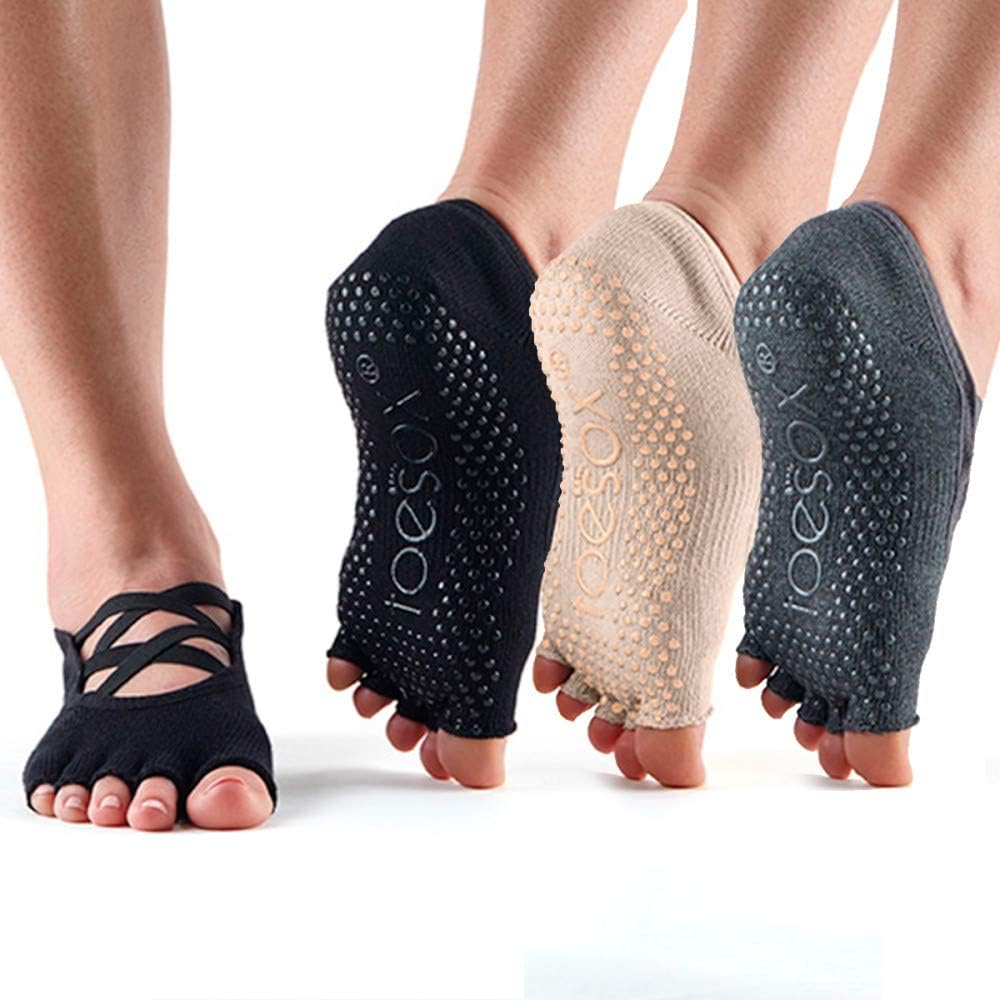Should You Wear Socks While Practicing Yoga?
For those entering the world of yoga, the choice between practicing with or without socks is a common dilemma. Both options have their advantages, and the decision often comes down to personal preference and comfort. Here’s a breakdown of considerations for both barefoot and sock-clad yoga practices:
toesox Elle Half Toe Multi Pack – Grip Non-Slip Toe Socks for Pilates Barre Yoga, Check Price >>>
Barefoot Yoga Practice:
Enhanced Balance:
- Barefoot practice allows for a better understanding of force points, aiding in adjusting and maintaining stability. The sensation of the sole against the floor helps identify key exercise points.
Meridian Massage and Improved Circulation:
- The sensitivity of bare feet on the ground stimulates nerves, promoting blood circulation, enhancing breath control, coordination, and overall stability.
Freedom and Relaxation:
- Without the constraints of shoes and socks, practicing yoga barefoot can evoke a sense of freedom and relaxation during the session.
Yoga with Socks:
Warmth and Anti-Slip Features:
- In colder weather, yoga socks provide warmth and often come with anti-slip particles, enhancing friction and absorbing foot sweat for added stability. Ideal for winter or cooler environments.
Variety of Yoga Sock Styles:
- There are several types of yoga socks to choose from:
- Full-toe socks offer 360-degree foot coverage, preventing injuries during exercise.
- Backless socks expose the instep, suitable for summer wear.
- Open-toed socks offer a fashionable and novel option.
- Yoga socks with separate toes promote hygiene and health.
- Two-toe one-piece socks provide a blend of fashion and health.
- Non-slip socks are essential for challenging yoga poses, preventing slips and ensuring comfort.
- There are several types of yoga socks to choose from:
Choosing the Best Yoga Socks:
When opting for yoga socks, consider the following factors:
Anti-Skid Design:
- Look for rubber anti-skid particles on the bottom to prevent slipping and enhance shock absorption.
Interior Features:
- Quality yoga socks include ultra-cotton terry inside the soles for cushioning, breathability, sweat absorption, and additional shock absorption.
Thickness:
- Yoga socks are generally thicker to avoid the soles becoming too cool when in contact with the ground.
Additional Functions:
- Ideal yoga socks should possess anti-slip, antibacterial, and deodorant properties, ensuring a comfortable and hygienic exercise experience.

